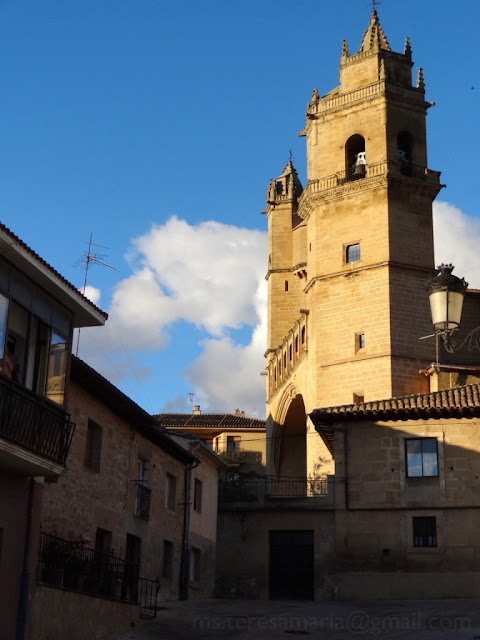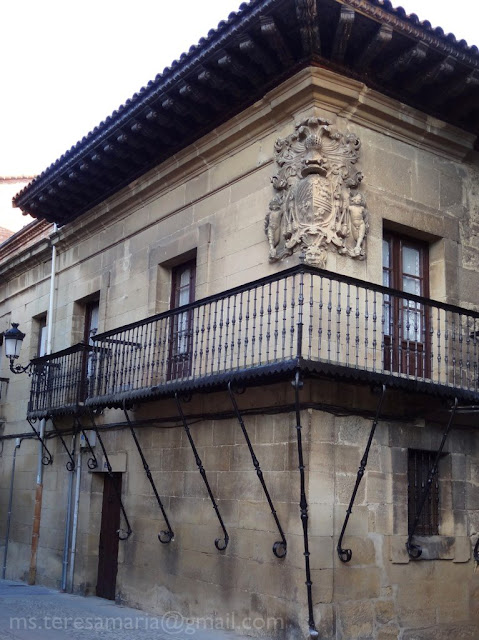Back to Spain, the Álava province of the Basque Country
and Elciego, the place where I
recently took you on a tour at the distinguished Marqués
de Riscal winery here.
The origin of the name of the
village – el ciego, the blind man – is not known. According to one legend a blind man once had a tavern or inn on the location of the current
village. The first written records on Elciego date back to the 11th century but the existing historical buildings are from the 16th and 18th centuries.
The present Álava province was once a region where Christians,
Jews and Moors coexisted for centuries. It was also once a border area
between the Kingdom of Castile and that of Navarre thus burdened with a constant
risk of conflicts. Villages such as Elciego were therefore given privileges
leading to an increase in population of both noblemen and commoners in the
region, and to reinforcing the defense of the villages. In the late 16th century, King Felipe II granted Elciego the status of a town. However, these days a municipality with a population only just exceeding 1,000 is probably considered a village.
Elciego demonstrates all the characteristics
of the medieval communities in the region. The main attributes are location on
a hilltop and buildings of stone. Furthermore, every village has at least a couple of sanctuaries.
The parish church Iglesia de San Andrés:

They have a nice main square, in this
case a most lovely, rather large one also called Plaza Major and surrounded by buildings from the 16th and 18th
centuries.
They have a number of historical
buildings with exquisite details in stone, wrought iron and carved wood.
Ajuntamiento or ‘town hall’ with the
coat of arms donated by King Felipe II:
Following two photos: ‘Casa de los Hierros’, ‘ the iron
house’, officially Palacio Navarrete Ladrón de Guevara. The coat of
arms is that of a bishop who was born there.
Coats of arms most skillfully carved in stone are a common feature of old palaces and mansion in this area and they can also be found
on facades of buildings that are not that ancient.
Following two photos: Palacio Ramírez de la Piscina.
Although the Álava communities display similar characteristics they are by no means the same. Each and everyone has its individual charm, Elciego even more so thanks to the fabulous creation of Frank Gehry (I posted about here) literally only a stone’s throw away.



















What a lovely village, I love to visit places through your blog.
ReplyDeleteThat Frank Gehry building looks more fascinating every time that I see it.
Thank you, Blandina! More to come soon, I hope.
DeleteTuo basilikan piha on todella kaunis ja niin hiljainen. On ihanaa, kun saa olla jossain paikassa ihan itsekseen, kaikessa rauhassa.
ReplyDeleteTosiaan rauhallista oli. Meidän viiden aikuisen ja yhden alle kaksivuotiaan seurueemme moninkertaisti kulkijoiden määrän. Taidettiin nähdä yksi äiti rattaiden kanssa ja joku nuori mies baarin ovella. Tässä kylässä olisi voinut hiljentyä pitempäänkin.
Delete